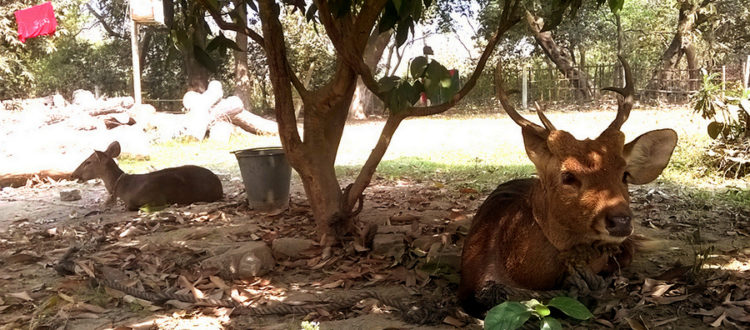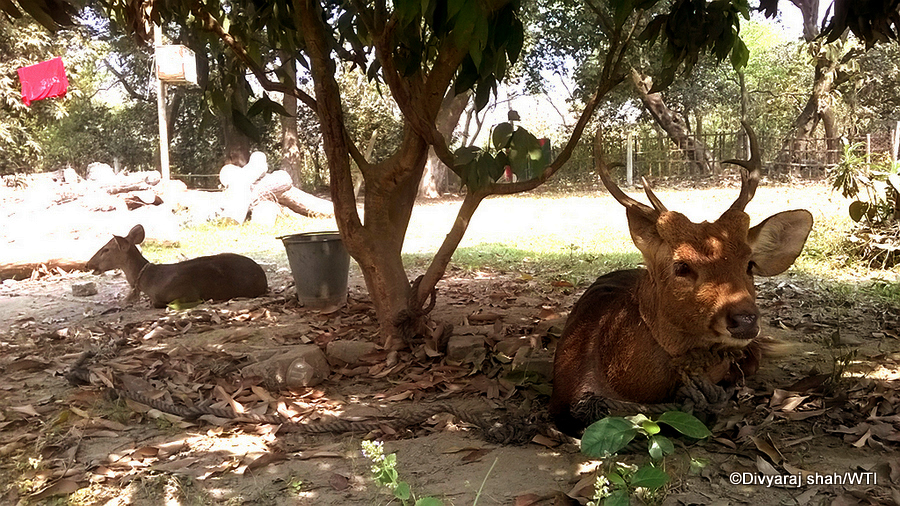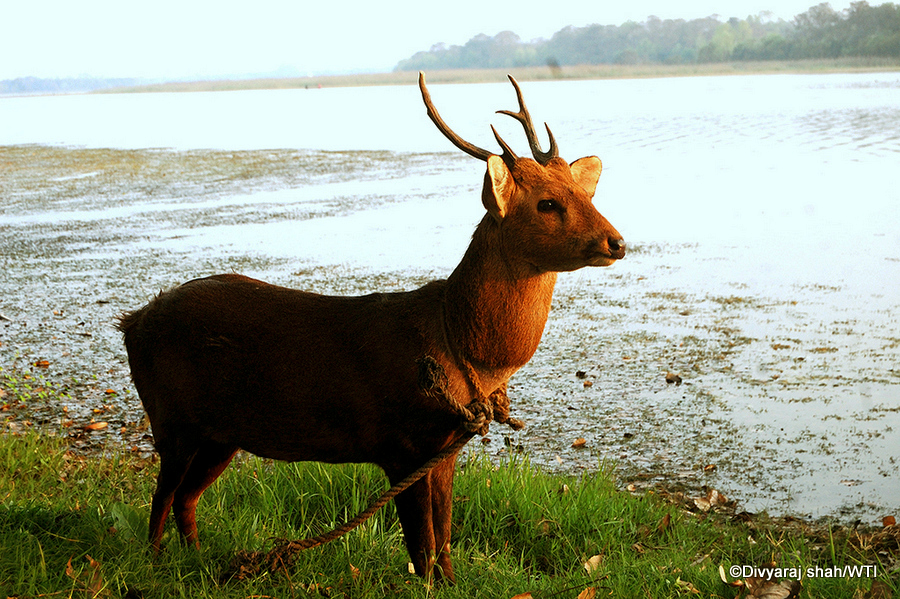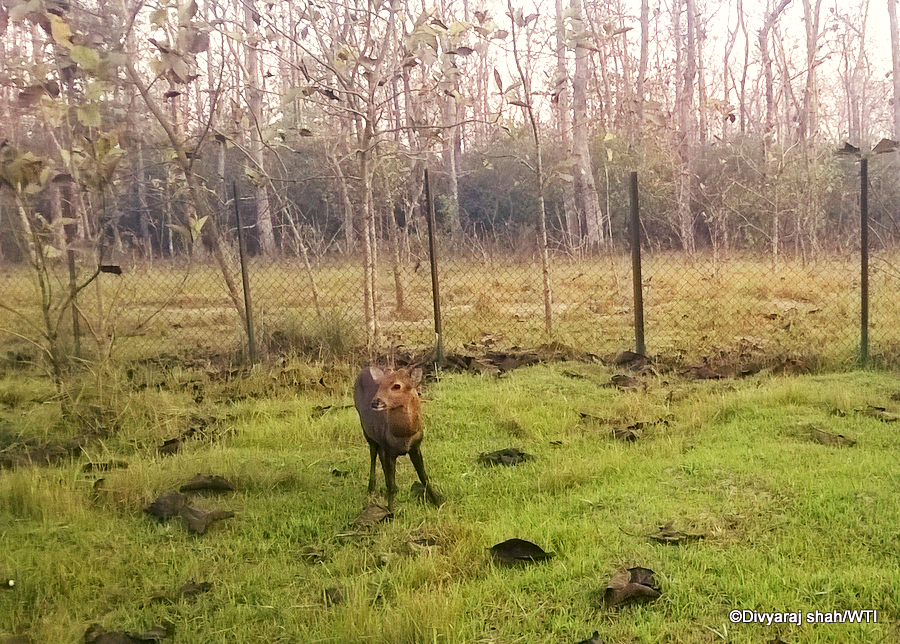A Happier Home for Two Udaypur Hog Deer
In January this year, while I was working as a rehabilitator for IFAW-WTI’s Emergency Relief Network at the International Kite Festival in Porbandar, Gujarat, I received news of an opportunity to work with a pair of captive Hog Deer (Axis porcinus) at the Udaypur Wildlife Sanctuary, Bihar.
My primary task, I was told, would be to assess and if possible rehabilitate the pair into the wild. I was initially apprehensive about taking the assignment – the area being extremely remote – but I decided to give it a shot. Soon afterwards the paperwork was sorted and I was on my way to the sanctuary.
Udaypur WLS is situated in the West Champaran district of Bihar. It is spread across 8.74 sq km on an oxbow lake in the Gandak River floodplain, and is home to a large number of migratory and resident water birds. The sanctuary has areas of swamp forest, riverine forest and khair-sisoo forest. The nearest town is Bettiah, some 20km away.
I reached the sanctuary rest house at around 9am on March 2nd and immediately went to look at the deer. Although they were tied to a couple of tree stumps they seemed in no obvious distress, so I set about trying to ascertain their history. A few stories later I gleaned that they were probably flood displaced animals that had been hand raised at various villages along with livestock, and brought to the forest department as they grew to full size. The staff at the rest house said the deer had been living there for almost a year.
After a thorough check-up I found them free of physical injuries, except for the hair loss on their necks due to constant friction from the rope. The female turned her head in a strange way every few minutes, which I surmised was because she was not getting any grazing/browsing time. The staff had been feeding them all sorts of leftover kitchen produce and fresh water was made available only once every 3 to 4 days. After observing their routine for a day, I got to work.
Since the level of imprinting was very high I knew straight off that it would not be possible to release the deer back into the wild. Therefore, we set about building a good natural enclosure in which they could live, eat and exhibit normal behaviour as far as possible. As that would take a while to complete I began taking them to the banks of the Gandak to forage, drink water and otherwise spend their time. They were a bit hesitant the first time, but from then on whenever we took them in that direction they literally leapt with excitement, tugging at the rope! During this time I also trained the staff in the basics of rescue and management of deer and other sensitive wildlife.
The work on the enclosure was going very well, with all the local staff chipping in. We flooded the grazing grounds and modified the two watering holes to make the enclosure safer for the deer. The fencing was also repaired and made predator and stray dog proof. While the work was still going on I began leaving the deer tethered inside the enclosure, to help them acclimatise and see if there was any issue. But all went well and finally we were able to cut their ropes and let them roam free in the enclosure.
Over the next few days I observed them exhibiting natural behaviours. The stag, for instance, would rub his antlers against tree stumps. The doe would intermittently skip and run a little in the evenings. Both deer foraged intensely during late evening and through the night till dawn; daytime was mostly spent in resting in the various natural hides and bushes in the enclosure. They had settled down in ther new home nicely!
During my stay I received tremendous support from the local forest staff (Naseeb, Vinay), the RFO Ravi Kumar, and the home guards. The DFO Hemkant Roy made sure I faced no issues, as did WTI’s Dr. Samir Sinha. Overall, it was a wonderful assignment and thanks to WTI, the hog deer are now living a happier life in a much better home.












